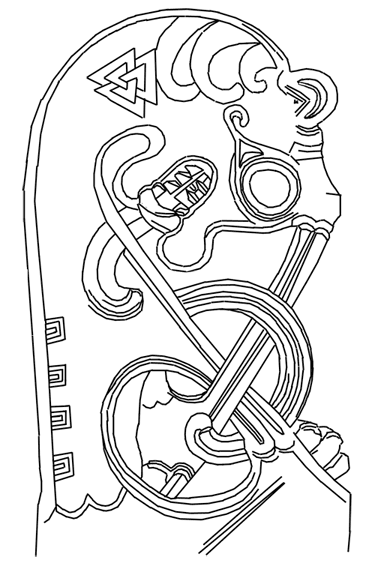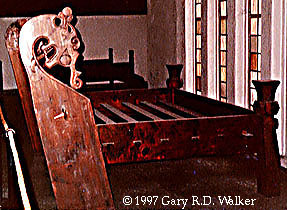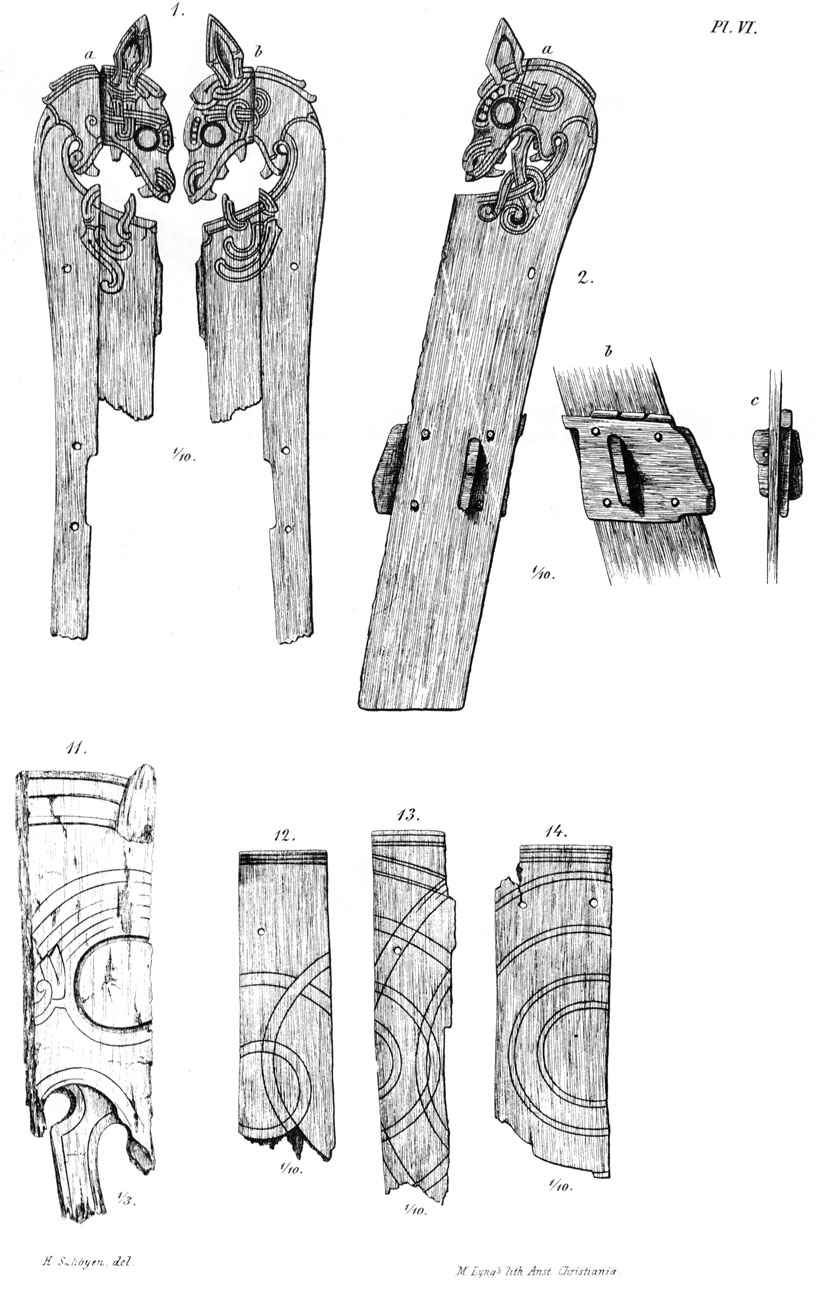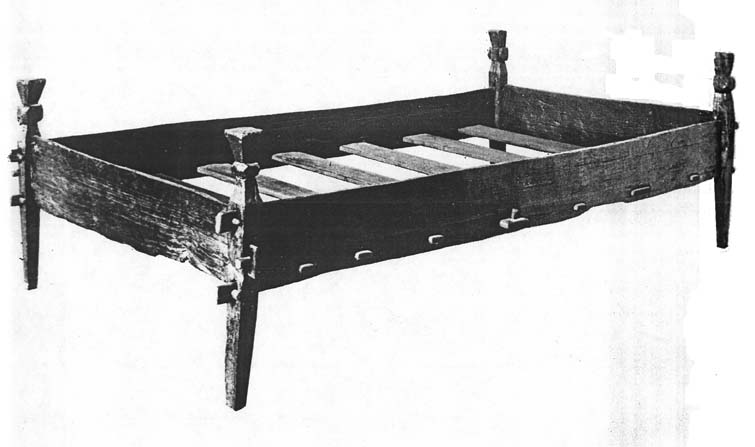Beds
Beds and fragments of beds have been found in two archaeological sites from the Viking Age: Oseberg and Gokstad in Norway. The Oseberg find is dated to circa 850 and Gokstad circa 900.


This is a reproduction of one of the Oseberg state beds from a museum in Norway. Note the angled headposts. This was probably to save space on ship by allowing the bed to be placed as close to the gunwale as possible. The non-state beds do not have this feature. Unfortunately, no non-ship beds have been found from the Viking Age, but such from just post-Viking Age do not have angled headposts. Hoffman3 has pictures of at least one bed of this type though attached to a wall. Note this reconstruction appears to be missing the rivets that held the side rails to the headposts.
One of the carved head pieces from Oseberg has a maximum width of 49.4 cm/19-7/16 inches. Both are 1.59 metres (5 feet 2 1/2+ inches) tall and 45 cm (17 3/4- inches) wide overall.3 The state bed has an inside length of only 1.65 metres/5 feet 5 inches and a width of 1.8 metres/5 feet 11 inches approximately at the head (the measure at the foot being slightly less). One state bed and four ordinary beds are mentioned in publications, made from beech. Bibby1 has a drawing of the state bed with a slightly different reconstruction including two poles apparently intended to rigidfy the mattress slats.



From Gokstad, one state bed and five ordinary beds (two reconstructable) are mentioned in museum publications. Made of oak. The first illustration is extracted from plate VI from Langskibet fra Gokstad, 1882 and the second from plate VII. (Item 167, p. 272 Roesdahl & Wilson From Viking to Crusader. New York: Rizzoli, 1992. ISBN 0-8478-1625-7) In Brogger & Shetelig (The Viking Ships. New York: Twayne, 1971. ISBN 82 09 00030 6), it states on p. 99: ". . . Parts of a big splendid bed were found in the Gokstad ship. . . . From the blue clay which had pushed up into the grave-chamber there was a loose fragment of a carved animal head, exactly matching those found on the bedposts. This is clear evidence that another bed of the same type had been in the grave originally. 6 simple beds were also found, partly in fragments, . . ." One of these ordinary beds had posts 2 feet 3 inches high, ends 3 feet 5 inches wide, and sides 7 feet 5 inches long.2 (Also 1 bed 227 cm long (7 feet 5 1/3+ inches) and 109 cm wide (3 feet 7- inches) (the most complete bed) and another 140 cm long (4 feet 7 1/8- inches) and 110 cm wide (3 feet 7 1/3- inches).) The bed from plate VII had dimensions 70 cm high for the corner posts, endboards 1.09 m and sideboards 2.27 m long.4 The other bed 75 cm high, endboards 1.10 m and sideboards 1.43 m long. One of these boards is 28-30 cm wide (the source text is awkward).4
I have done a number of loose reproductions of the state bed design.
1 Bibby, Geoffrey. Testimony of the Spade . New York: New American Library, 1974.
2
Simpson, Jacqueline. Everyday Life in the Viking Age. London: Carousel Books, Transworld Publ, 1967.
3 Hoffman, Marta; ed. N.B. Narte and K.G. Ponting. "Beds and Bedclothes in Medieval Norway," in Cloth and Clothing in Medieval Europe: Essays in Memory of Professor E.M. Carus-Wilson. London: Henemann Educational Books, 1983. 351-315. (Pasold Studies in Textile History 2. ISBN 0-435-32382-2)
4 Hoffman, Marta; ed. N.B. Narte and K.G. Ponting. "Beds and Bedclothes in Medieval Norway," in Cloth and Clothing in Medieval Europe: Essays in Memory of Professor E.M. Carus-Wilson. London: Henemann Educational Books, 1983. 351-315. (Pasold Studies in Textile History 2. ISBN 0-435-32382-2)
Copyright © 1997, 2001, 2007 Gary R.D. Walker
Return to Norse Page, or Gerek's Woodworking.
Last updated 16/3/07.
webmaster at ravensgard.org




